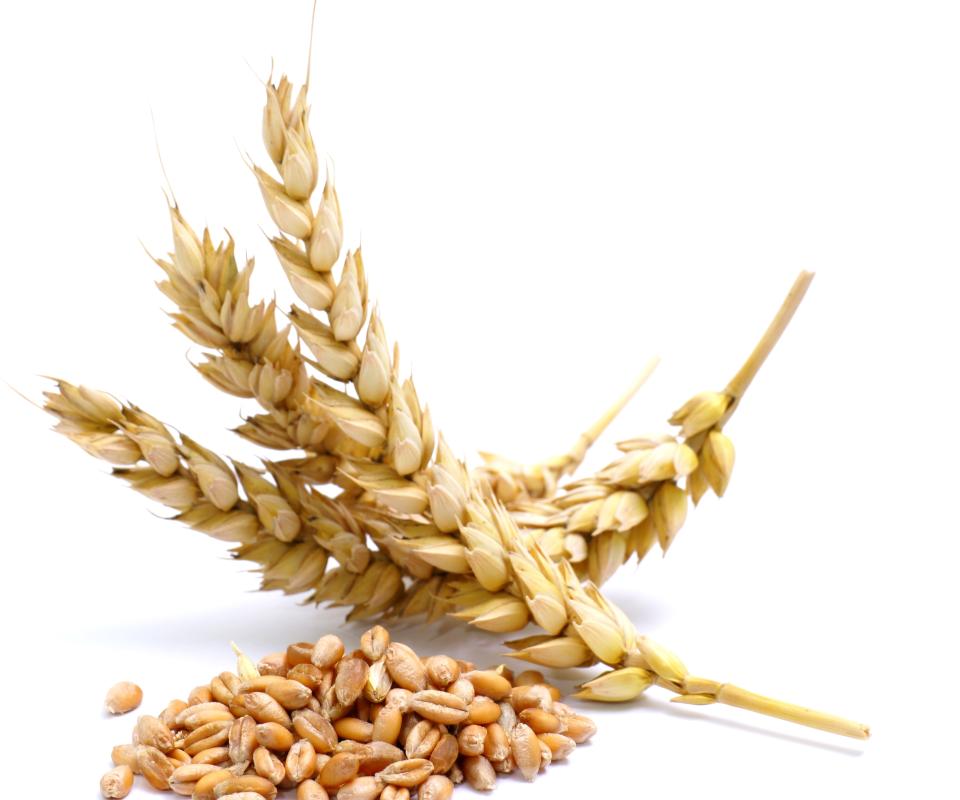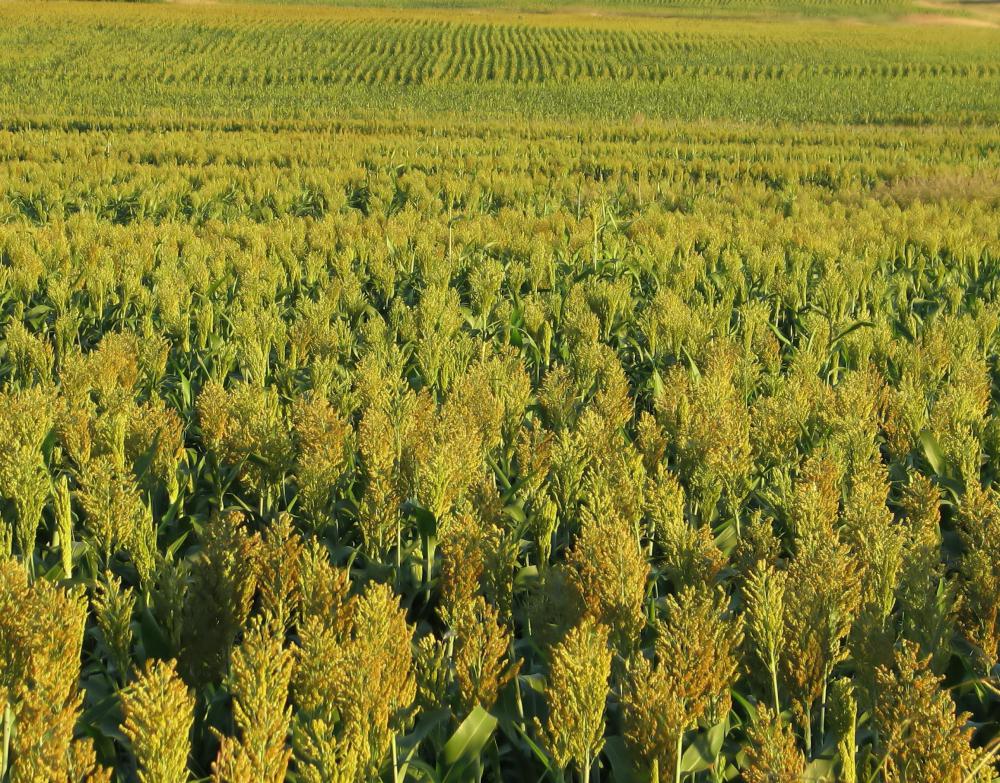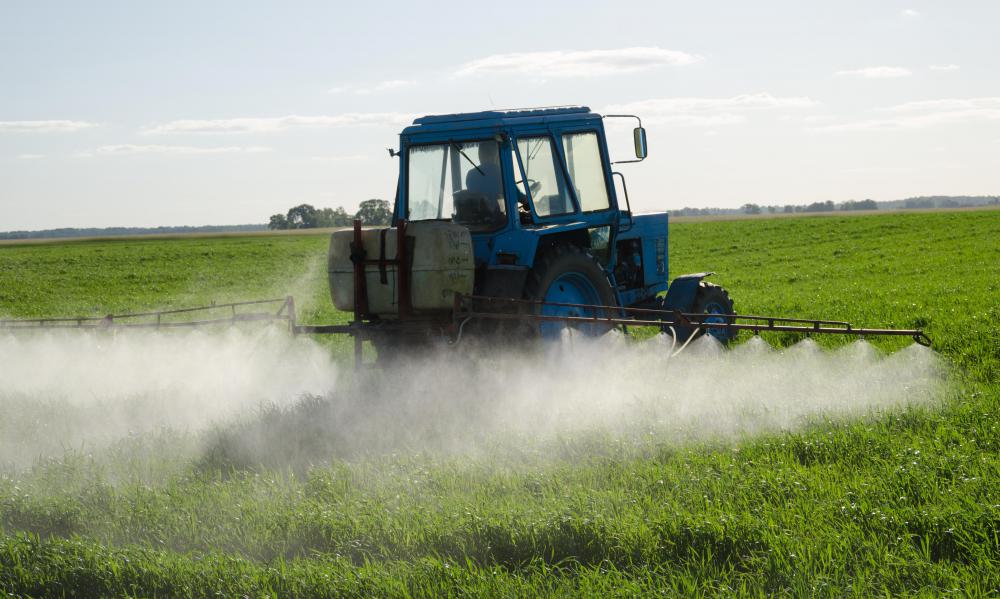What is Monocropping?
 Mary McMahon
Mary McMahon
Monocropping is an agricultural practice in which the same crop is planted year after year, without practicing crop rotation or resting the soil. While there are some distinct advantages to this technique, it is environmentally questionable and can potentially lead to serious economic problems for farmers, as well. Many environmental advocates would like to see a shift away from this type of farming, as would people who work in the developing world.
The obvious advantage to monocropping is that it allows a farmer to specialize in a particular crop, which means that he or she can invest in machinery designed specifically for that crop, along with high-yield seeds that will generate a large volume of the crop at harvest. With staple crops like wheat, corn, and soy, farmers can also be confident that the crop will produce a high income, although this scheme can backfire; if demand declines radically, a farmer's monocrop may become a liability.

From an environmental perspective, farming in this way is harmful for a number of reasons. For one thing, it severely depletes the soil, as the plant will strip the soil of the nutrients it needs. This forces farmers to use fertilizers, which can disturb the natural balance of the soil and contribute to a host of environmental problems, from pollution to desertification. The practice can also contribute to the proliferation of crop pests and diseases, which can be a serious liability when a farmer's land is planted exclusively with one crop.

Monocropping also generally reduces crop diversity, which is perceived as a bad thing both because the loss of biodiversity is unfortunate, and because if a crop does become subject to a particular pest or disease, it becomes especially vulnerable. In a world where only a few strains of corn are grown, for example, if a pest develops to attack one, it could devastate global crops, and farmers might not have another strain to fall back upon.

Additionally, the practice is very dangerous when natural disasters or shifting weather devastate a crop. A farmer with diverse crops could afford to take a small loss if one crop failed to yield, but in a region where only one crop is grown, the results can be catastrophic. Farmers may find themselves heavily in debt at the end of the season, and the lack of harvest could translate into famine or general hardship.

As an alternative to monocropping, farmers can rotate crops, planting different types of plants in each field annually, and they can also periodically allow fields to lie fallow to recover. Some farmers also encourage the practice of mixing crops in the field each year, using a combination of crops to strengthen the soil and create a more diverse yield.
AS FEATURED ON:
AS FEATURED ON:















Discussion Comments
The same rules apply for the home gardener. I have planted tomatoes in the same place a few years in a row and noticed that tomato plants were not producing as well as they did the first year. Now I either rotate, or give the soil some rest. The reason for that, I thought, was that the soil was depleted of some nutrients.
Another good reason for rotation is that pests and diseases that thrive on that particular plant will not have the chance to grow and increase. A good rule to follow is a three year plan, so in the fourth year the same crop can be planted in the same spot as in year one.
Post your comments